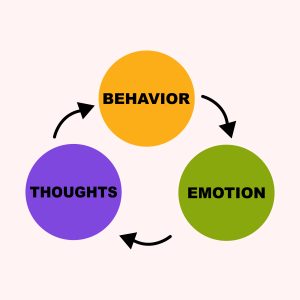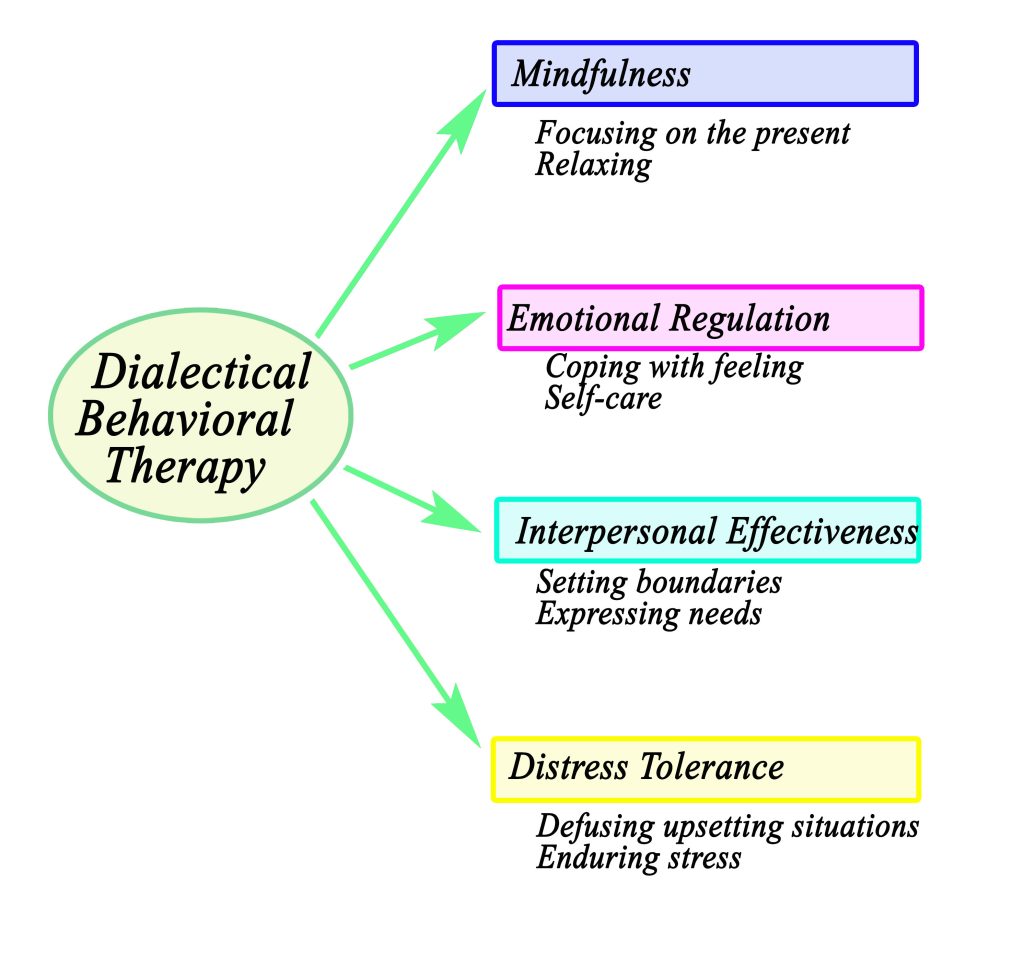Therapy I practice
TOP-DOWN
Logical thinking- the dorsolateral prefrontal cortex

Talk Therapy
If you feel stuck in a situation, if your mood changes and feels like you are part of the problem, or if you’re experiencing a difficult time making an adjustment in your life, talk therapy can help.

Cognitive Behavioral Therapy (CBT)
In CBT, you will learn to identify thinking patterns in your everyday life that are causing painful emotions, behaviors, or other problems. Then, you will learn to change how you feel and behave by learning new thoughts.
Based on the premise that our thoughts, feelings, and behaviors are interconnected.
They influence each other. CBT helps you recognize and change negative or unhelpful thought patterns and change them into healthy, helpful thoughts and behaviors. Aaron Beck is the father of cognitive behavior therapy.

Dialectical behavior therapy (DBT)

DBT nonjudgmentally accepts problematic thinking. Then, it helps to make changes in thinking patterns more balanced.
Using behavior activation and cognition skills:
- Observe and Describe
- Mindfulness
- Emotional Regulation
- Distress Tolerance
- Interpersonal Relationships
If you feel you are on an emotional roller coaster, DBT is a very beneficial therapy. Marsha Linehan is the creator of DBT.
Gottman’s Couple Therapy
The Gottman Method is couples therapy developed by Dr. John Gottman and Dr. Julie Schwartz Gottman. Interventions used in the Gottman Method are research-based and grounded in the Sound Relationship House theory, which specifies the nine elements of a healthy relationship.

BOTTOM-UP
Feeling center of the brain- Limbic system
Mindfulness

Nonjudgmental awareness of your thoughts, feelings, and sensations. Notice reactions and be curious. Being present in the moment with one's wise mind encourages resilience.
Body-Based Therapies
When our bodies are dysregulated by hyperarousal or hypoarousal, our brains go offline, so logical words are ineffective. When stress arousal is in the resilient zone, we are able to think and speak clearly. In the resilient zone, we feel grounded, and centered with slow and rhythmic breathing and heart rates.

Nurturing Imagery
Nurturing imagery simulates the loving bonds promoting proper brain development. Adverse childhood experiences (ACE) impair proper brain development. Hence, providing nurturing from imagined ideal caregivers and sometimes, from yourself, these imagery experiences generate constructive neural patterns in the brain, which begin to offset disturbing brain wiring resulting from ACEs. Newly formed neural pathways will assist you to feel and function at your best. Imaginal Nurturing is a natural accompaniment to EMDR work and leads to more gentle and easier trauma processing, and being valuable in and of itself.

Havening Touch
Evidence-based tools shift the way one’s brain functions, decreasing feelings of stress and increasing feelings of safety. Advancements in brain science have emphasized the role of the amygdala and specified glutamate receptors in keeping the activation of the receptors that encoded the traumatic experience. Based on these new advancements, we have knowledge of how to potentiate these receptors. Havening Techniques rest on the principles of neuroscience to deactivate the trauma in the limbic system, which results in a significantly reduced presentation of trauma and other fear-based disorder symptoms.
Emotional Freedom Technique (EFT)
EFT is an evidence-based energy psychology technique that combines cognitive therapy with acupressure. This powerful approach helps process emotional trauma, reduce physical pain, and address cravings and addictions. By tapping on specific meridian points while focusing on emotional issues, EFT helps to restore the body's energy balance and promote rapid healing.
EFT is particularly effective for:
- Trauma and PTSD symptoms
- Anxiety and panic disorders
- Phobias and fears
- Chronic pain management
- Addiction and cravings
- Emotional regulation challenges
